I know it's kind of odd to go to a funeral while on vacation – especially when the deceased is someone you’ve never met! But in Bali, cremations are the occasion for enormous festivities to honor not only the individual, but also the clan and caste.
We had asked the hotel staff if any funerals would be taking place during our stay, and about a week later, they arranged a car and guide for us to attend an unusually elaborate ceremony honoring a woman of the Brahmin, or priestly caste – the highest of Bali’s four castes. The castes are slowly losing their full meaning, but traces of them are still very much evident in daily life, in people's names, in the speech they use to address each other, and, most visibly, in the size and scope of their funeral arrangements.
This woman, aged 74, had died four days’ previously, and her family had selected this extremely auspicious day for her rites. (The next “good” day for a funeral was some weeks hence.) As you’ll see, cremations are elaborate affairs. Often Balinese families bury their dead and then wait months or even years to hold the formal cremation, saving up enough money to give the dead a big send-off (and, yes, for the morbidly curious, they dig the body up in order to cremate it).
The two largest expenses were parked right outside the family temple as we pulled up with our guide: an enormous, bull-shaped casket:
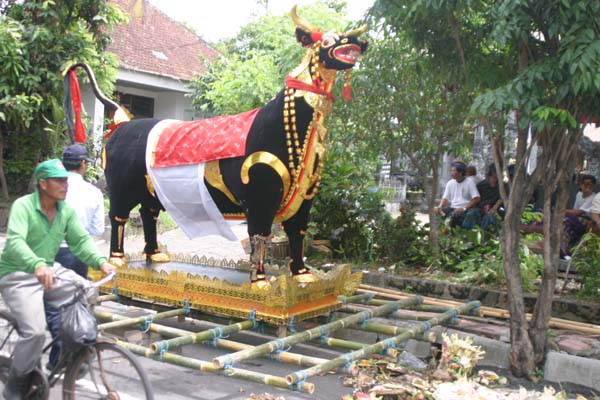
And an intricately-decorated funerary tower, which featured a photo of the honoree:
 |
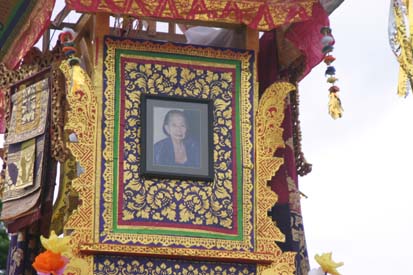 |
Both were extremely beautiful. It was hard to believe they had been made
just to be burned.
We waited outside the house for half an hour, along with musicians, attendants, and other onlookers, while the private rites went on inside. Then the activity picked up: a pair of sedan chairs appeared; the musicians finished their cigarettes, slung on their instruments, and streamed out into the street to form ranks in front of the bull. |
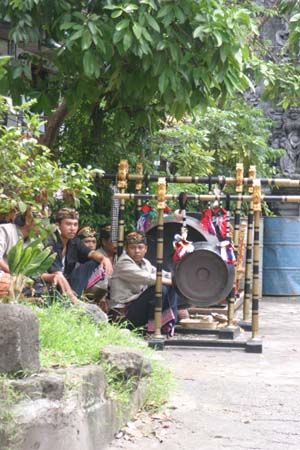 |
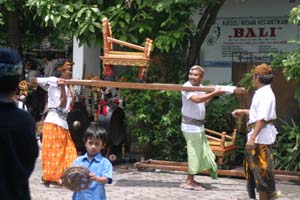 |
 |
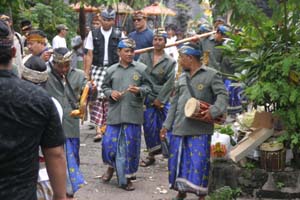 |
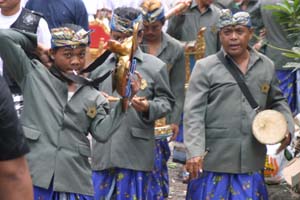 |
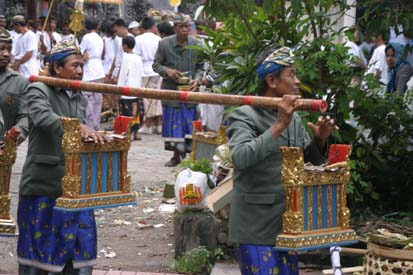 |
 |
Two teen-age girls settled into the chairs, while attendants fussed over their hair and ornaments. Our guide explained that they were the deceased’s granddaughters. They would ride in style during the two miles to the cemetery, preceded by dozens of attendants bearing offerings
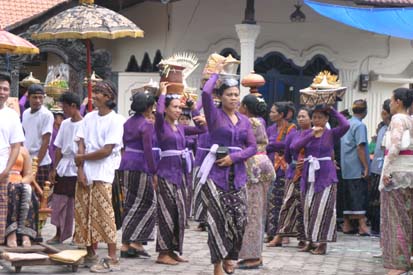 |
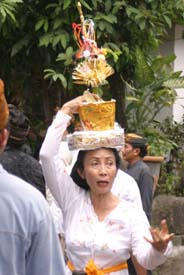 |
 |
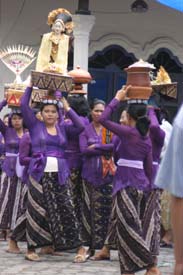 |
| The procession was in place, and now the guest of honor emerged from the house, and was carefully placed atop the funeral tower for the two-mile trip to the cemetery. |  |
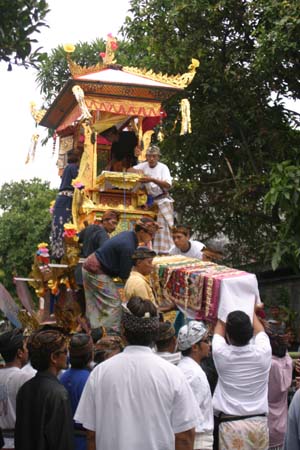 |
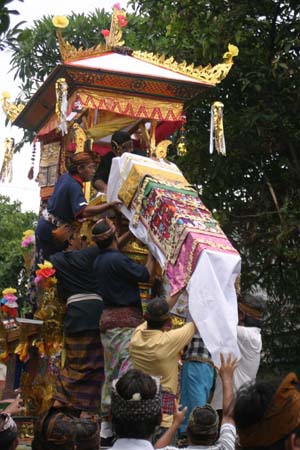 |
Finally, a man mounted the bull itself – his job was to stay on top as the bearers spun and swayed the bull from time to time. The tower carrying the coffin was whisked around in circles, too, in hopes that the spirit of the dead woman would forget the way back home and move on to the afterlife instead of returning to nag her living relatives. |
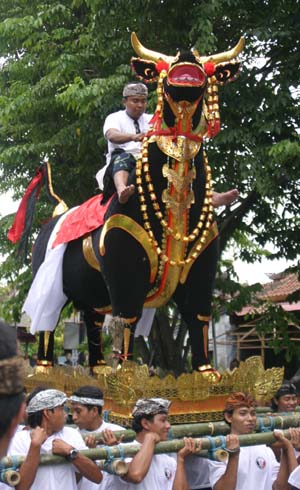 |
The procession stretched for at least a half a mile. (Although it’s quite common for tourists to attend and photograph cremations, and they are welcome to do so, we saw only a few other foreigners despite the size and splendor of this ceremony.)
 |
 |
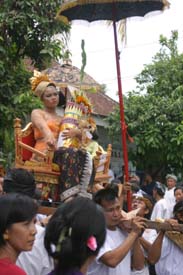 |
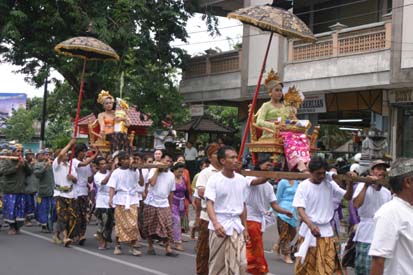 |
 |
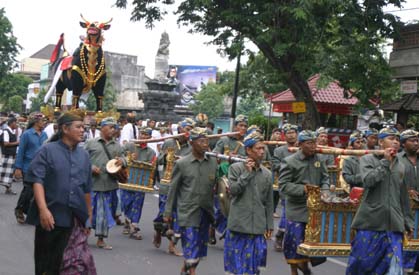 |
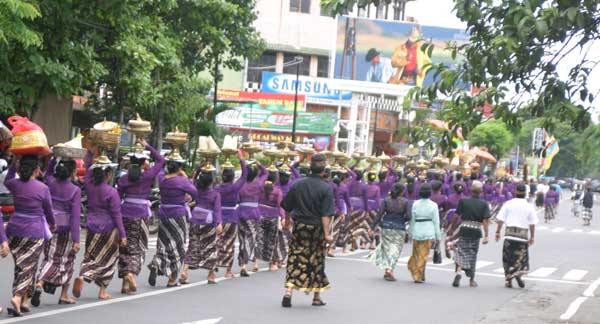
To our amazement, the funeral was given uninterrupted passage through Denpasar’s normally traffic-choked streets.
At the first intersection, the bull-bearers gave their charge a rapid turn-around as the lights changed several times:
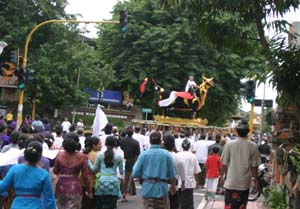 |
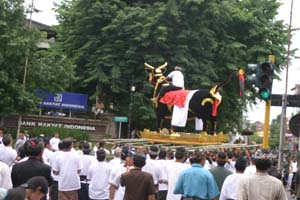 |
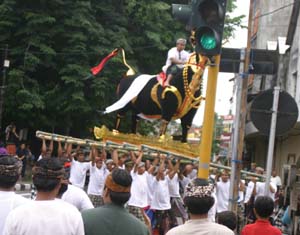 |
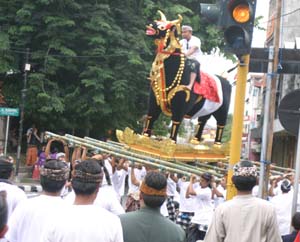 |
Following behind, the funeral tower also crossed
the street -- against the light and way, way outside the crosswalk!
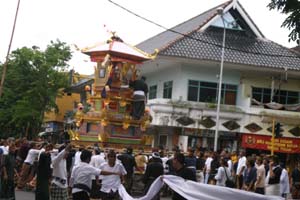 |
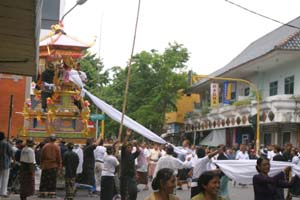 |
Clanging, repetitive, hypnotic music from two separate gamelan orchestras added to the surreal scene.
The temperature was in the high 90s and the humidity was just about 100%, so the bull-bearers had a hard job.
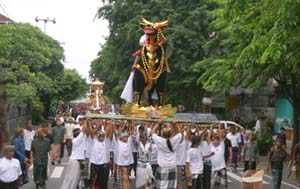 |
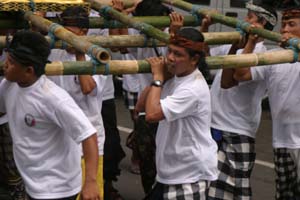 |
From time to time, attendants striding alongside handed them bottles of water and splashed their faces, as if they were running a race.
Arriving at the cemetery, the funeral participants fanned out.
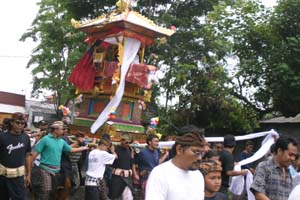 |
 |
The coffin was taken down from the tower, while offerings were arranged nearby.
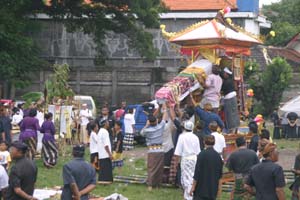 |
 |
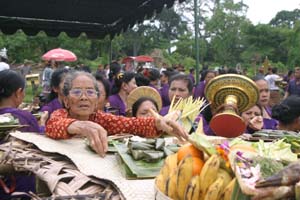 |
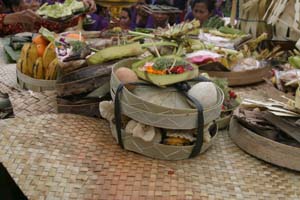 |
As it turned out, the bull was actually the cremation casket, and therefore had to be elaborately prepared in a series of steps that took more than an hour.
Step one, captured below, was sawing off the bull's back, to make room for the body:

Meanwhile, everyone else settled down to watch, and have a snack.
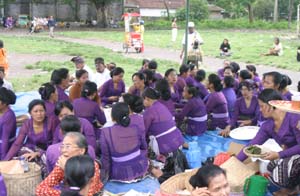 |
 |
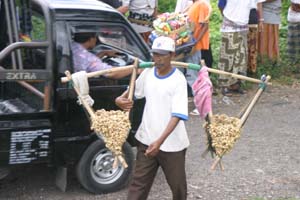 |
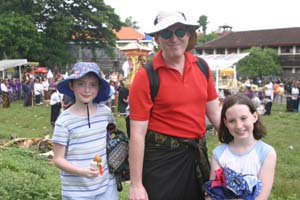 |
A group of men prepared the body by removing
it from the wooden coffin in which it had made the journey from the house,
and then gently unwrapping five separate coverings.
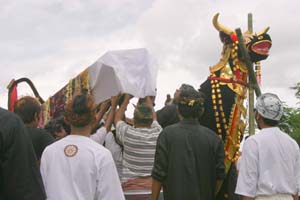 |
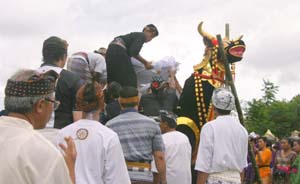 |
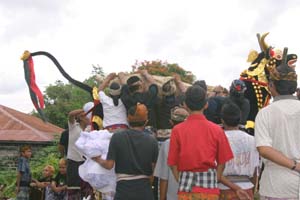 |
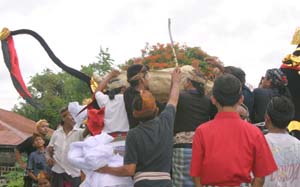 |
Our guide explained that the body would be burned after the priest had made his final blessings, and after offerings were placed near the bull (note the deceased's hands in the first two pictures):
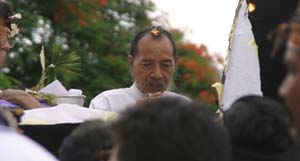 |
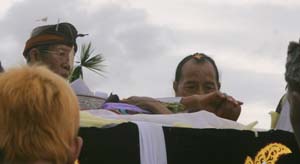 |
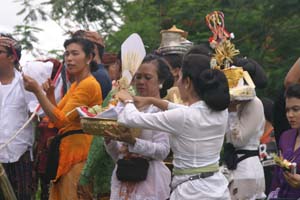 |
 |
| As this was going on, our guide explained that while the bull and the body would burn now, the fancy pyre would go up in flames later, or on another day, after the guests had left. It had served its ceremonial purpose and burning it wasn’t a vital part of the ritual. |  |
With the blessings concluded, a pyre of green palm wood was swiftly built at the base of the bull (note the propane pipe threaded between the front legs).
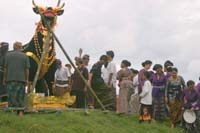 |
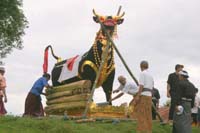 |
 |
With a roar, the flames began!
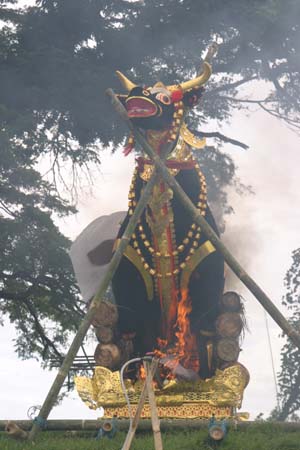 |
 |
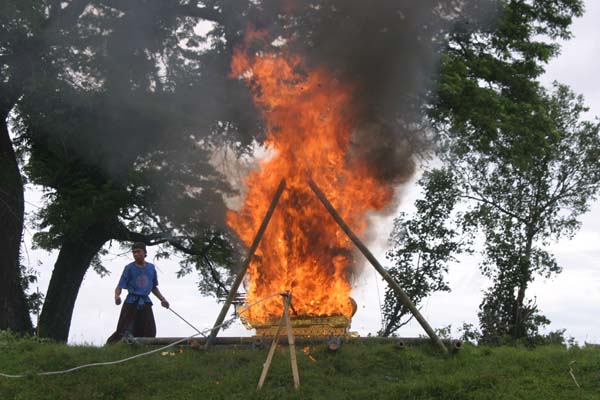
It took just a few minutes for the bull’s decorative outer shell to be totally consumed. Our guide told us that the body would take several hours to burn to ash, and that most of the people, and especially her relatives, would wait at the cemetery until the ashes had cooled in order to retrieve them (note the body in the last photo below):
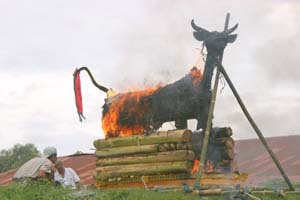 |
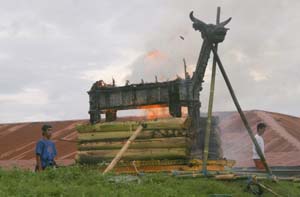 |
 |
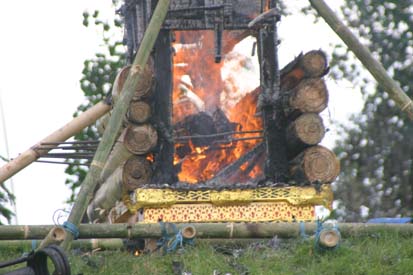 |
Sharon has decided she would like similar rites for her own funeral. Better start saving now...
Next: We dress
up as a Balinese family for a fun photo shoot.